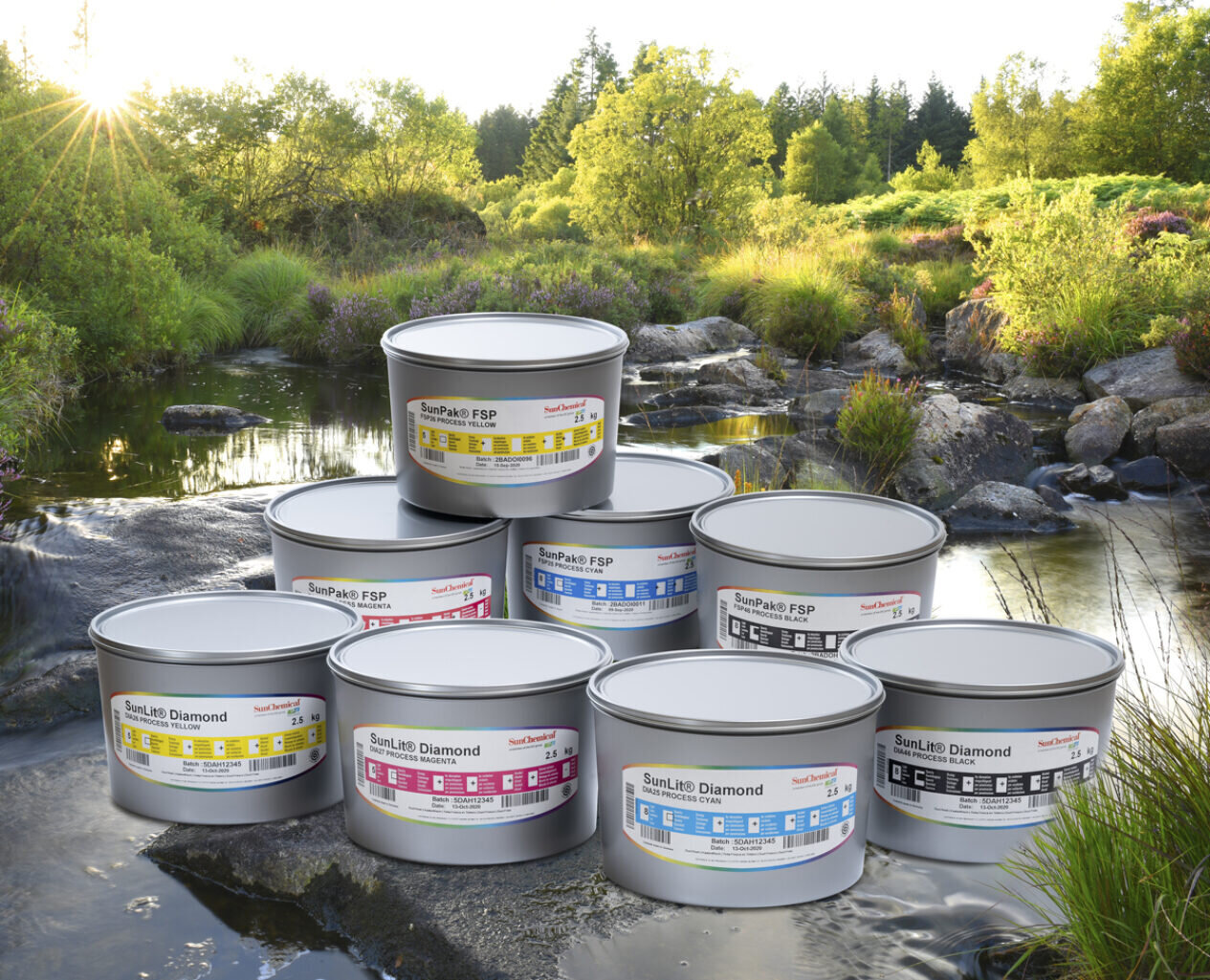
Specialist work in the print personalisation sector often involves working with a certain type of ink. Here, FESPA.com looks at some of the key considerations around ink products when producing personalised pieces.
As is the case with all print, you cannot expect to achieve the same results on each type of print job using the same ink. Each individual project will have its own factors that will play a major role in how the ink performs. To put it simply, print service providers (PSPs) must do their research before taking on new work to ensure they get their ink right.
This is certainly true of the personalisation sector and the huge array of work on offer here. Inks will differ from job to job and understanding each piece, the materials involved, how it will be used and the type of environment in which it will used can help guide PSPs to the most effective, accurate and reliable ink products.
FESPA.com sheds more light on the subject and offers guidance to those hoping to stand out with personalised print.
Meeting your match
Fujifilm has a wide range of inkjet inks available to the market, offering everything from UV and water-based to hybrid and specialist inks. Mark Stephenson, product manager of digital printing and press systems for the Graphic Systems EMEA business at Fujifilm, said there are several factors that PSPs need to consider when defining what is required of the inks in their print system, with these all being related to the application.
“Firstly, if you’re working on personalisation related to food and packaging, then compliance with food regulations is critical,” Stephenson said. “Of course, it depends on how you are packaging things; Fujifilm has inks that are designed for indirect food contact applications and can go on the outside of package, with the food not touching the ink. Examples of this include boxes with burgers or donuts inside.
Fujifilm said printers should consider the application type when selecting their ink.
Image Credit: Fujifilm

“Then you have to think about things like odour. For personalised print that is handled, like in direct-mail or product labelling, it is desirable for it to have no odour. Fujifilm has inks that are low odour, even in UV, so can offer solutions to PSPs in these markets.”
Stephenson also spoke about the importance of matching in personalised work, saying this can have a major impact on the look of the final product. Again, inks will have a major role in how this pans out.
“Lots of personalisation is done on a standard background, often called a shell, which has been offset printed, then printed over with personalisation,” Stephenson explained. “However, if you have something that has been obviously printed over with personalisation, it puts the seller in danger of showing that they don’t really care and have just slapped the customer’s details on the piece.
“The matching of the colour and ink appearance on the surface is important and this often comes down to induvial formulations. Whether we are designing inks for our own systems, or OEM systems, our ink formulations are developed to meet the requirements of the application. Every ink we make starts with ‘what is it going to be applied to and in what conditions’.”
Packaging a personalised punch
In terms of what markets PSPs may consider moving into in terms of personalised printing, Stephenson said with the wide-format market, there is a big cross-over in the corrugated area with mail order boxes. He said these boxes now form part of the buying experience for consumers and adding personalised elements to the packaging will help leave a lasting impression on customers.
“When it comes to having an unboxing experience, you open what looks like a boring plain box but contains a surprise,” Stephenson said. “This is high value; people will want to keep the printed box, making print perhaps as valuable as the gift inside. The first step here is to produce a nice box, with the second step being some form of personalisation.”
Stephenson also spoke about the gifting market, saying while there may be some sort of opportunity for expansion, this sector is already established and not seen as a growth area. He added that certain markets will differ from country to country. For example, he said in Germany, people will print photobooks and posters and send them to each other at the drop of the hat, whereas in the UK and Italy, it is a much smaller market in comparison.
“Targeting is about what value you can deliver through personalisation,” Stephenson said. “It is about the delivery and the experience you can offer with the print.”
Pivotal role for ink
Away from hardware manufacturers, Sun Chemical provides a wide range of ink options to the market. Simon Daplyn, product and marketing manager, said the personalisation market is expanding across various sectors and while growth has slowed slightly since the pandemic, there are plenty of opportunities.
“As consumers get a large amount of customised promotion via social media and digital platforms, personalised print brings the possibility to reduce mass promotion and focus on print that speaks directly to individual recipients,” Daplyn said. “This may apply to packaging, mailing, commercial print, ceramics or fashion, where users can create their own bespoke garments, choosing the design and fit. Similarly, in the food industry, some brands offer personalised cookies or confectionary options.”
Sun Chemical said ink plays a pivotal role in transferring the print to the substrate.
Image Credit: Sun Chemical

So, where should printers be looking for work? Daplyn said PSPs may need to work with agencies and brands to understand brand opportunities for custom print. He added that print houses can capitalise on opportunities to create personalised printed collateral, featuring offers and promotions tailored to individual customers.
“Flatbed UV printers are able to print on a wide range of substrates, opening up the market for personalised gifts,” Daplyn said. “It may also be possible for commercial print providers to diversify into personalised packaging by investing in specific software to allow packaging design and workflow.
“Within the garment market, web-to-print shops can engage with consumers via online design platforms offering templates or the possibility of uploading custom graphics that can be printed onto a selected t-shirt. This workflow is ideally suited to digital print as each garment could have a different design without increasing the set-up or process costs.”
Turning to the focus point of ink, Daplyn said in most applications, ink is a critical choice. He said when printing for a brand specifically targeting a customer, the print becomes part of the first impression that the consumer has of the brand experience.
“The hardware, software and ink delivery systems and components play a pivotal role in transferring the print to the substrate,” Daplyn said. “Among these, the ink holds particular significance as it is an integral part of the packaging – the one component of the process that the customer directly interacts with.
“It is the ink that delivers the colour, the application performance, the in-hand experience and the compliance, and so should be carefully selected to get the best experience for the brand and the customer.
“If lower quality inks are used, they may meet some of the performance criteria, but can risk the final performance of the product and customer impression if they do not have the correct abrasion resistance, water fastness, light fastness or product safety. Sun Chemical has an extensive range of high-quality inks to meet the needs of any print process or market.”
Discover the latest innovations in personalisation at Personalisation Experience 2024 at the RAI Amsterdam, Netherlands from 19th – 22nd March 2024. Visitors will have the opportunity to hear from leading minds and innovators sharing knowledge and experiences, see the latest developments and technology in personalised print solutions and network with those looking to help you grow your business. Register here to visit and use promo code PEXJ402 to get a 30 euros discount.